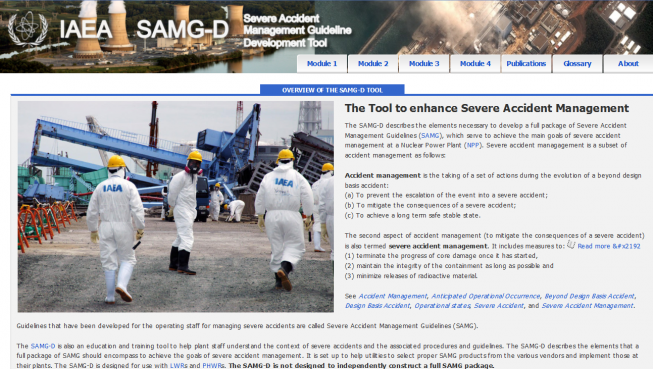
The IAEA toolkit describes the elements necessary to develop a full package of Severe Accident Management Guidelines. (Photo: IAEA)
Supporting Member States to have a common understanding of a reliable severe accident management programme for nuclear power plants (NPP) was the aim of a comprehensive two-day workshop held this month at the IAEA.
The Agency’s Severe Accident Management Guidelines Development (SAMG-D) Toolkit was first presented at a workshop in 2015. The recent event was organized to address the many requests from Member States for sharing knowledge and experience in using the relevant IAEA Safety Guide NS-G-2.15 and the SAMG-D Toolkit.
“This workshop has highlighted very important topics, especially for newcomer countries to nuclear power,” said Levent Özdemir, from the Çekmece Nuclear Research and Training Center of the Turkish Atomic Energy Authority.
“The meeting has attracted a large number of operators, emergency response organizations and regulators involved with SAMGs,” said Ibrahim Khamis, IAEA Scientific Secretary of the workshop. “It was the result of close collaboration between the Department of Nuclear Safety and Security, which developed the specific safety standard, and the Department of Nuclear Energy, which developed the practical toolkit.”
Indeed, the workshop held on 15-16 December gathered 52 technical professionals from 25 countries and the World Association of Nuclear Operators (WANO), the Institute of Nuclear Power Operations (INPO) and the Nuclear Energy Agency of the Organisation for Economic Co-operation and Development (OECD/NEA).
Developed under the IAEA Action Plan on Nuclear Safety, the IAEA SAMG-D toolkit has so far received very positive feedback. “It is an excellent educational material,” said a workshop participant, Dane Williams, INPO Team Leader for Emergency Response Development.
The workshop also covered main areas that support SAMG development. These included severe accident phenomena and challenges associated with maintaining fission product barriers, mitigation strategies, the development of generic SAMGs, the tasks and responsibilities in implementing and executing SAMGs in NPPs, interfaces with the emergency response organizations, extensive damage mitigation guidelines, and flexible and diverse response.
Meeting participants called on the IAEA to develop the SAMG-D toolkit in order to include multi-unit plants (i.e. NPPs with more than one reactor) and spent fuel pools, as well as case studies on how high level decisions by managers and regulators are implemented at various NPP sites.

Recent Comments